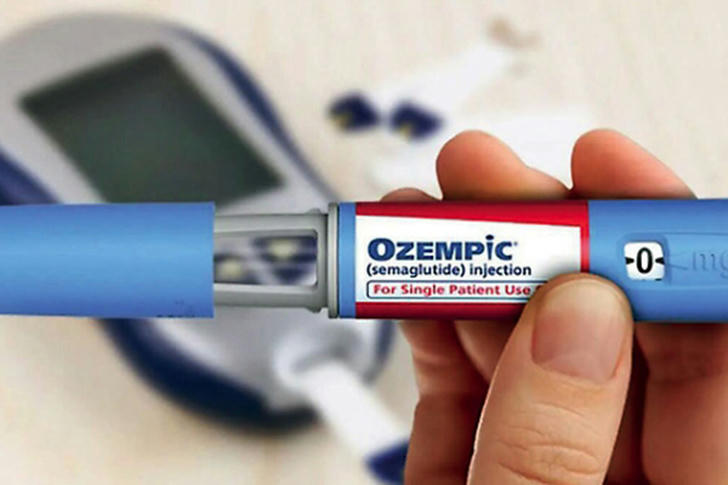Understanding Ozempic: Mechanism, Costs, Savings Tips, and Precautions in the U.S.
This article delves into the mechanism of action, costs, savings strategies, and important precautions associated with Ozempic in the United States.

What is Ozempic?
Ozempic (semaglutide) is a GLP-1 receptor agonist medication primarily used to manage type 2 diabetes and, more recently, for weight management. Its popularity has surged due to its effectiveness in controlling blood sugar levels and aiding in weight loss.
💰 Cost of Ozempic in the U.S.
The cost of Ozempic can vary based on several factors, including dosage, pharmacy, and insurance coverage. On average:
Without Insurance: The retail price for a 1-month supply (one pen) is approximately $1,318.
With Insurance: Patients with commercial insurance may pay as little as $25 per month, depending on their plan and eligibility for savings programs.
Manufacturer Savings Card: Novo Nordisk offers a savings card that can reduce out-of-pocket costs for eligible patients.
It's important to note that prices can fluctuate, and patients are encouraged to check with local pharmacies for the most accurate pricing.
| Weekly Dose | Typical Monthly Supply | Estimated Price (Monthly, USD) | Avg. Monthly Weight Loss* |
|---|---|---|---|
| 0.25 mg | 1 pen (4 doses) | $850 – $1,100 | 1 – 2 lbs (0.5 – 0.9 kg) |
| 0.5 mg | 1 pen (4 doses) | $900 – $1,150 | 2 – 4 lbs (0.9 – 1.8 kg) |
| 1.0 mg | 1 pen (4 doses) | $950 – $1,200 | 3 – 5 lbs (1.3 – 2.3 kg) |
| 2.0 mg | 1 pen (4 doses) | $1,100 – $1,350 | 4 – 7 lbs (1.8 – 3.2 kg) |
🧬 Mechanism of Action
Ozempic mimics the natural hormone glucagon-like peptide-1 (GLP-1), which plays a crucial role in regulating blood sugar levels. It works through several mechanisms:
Stimulates Insulin Secretion: In response to meals, Ozempic enhances insulin release from the pancreas, helping lower blood glucose levels.
Suppresses Glucagon Release: It reduces the secretion of glucagon, a hormone that increases blood sugar levels by promoting glucose production in the liver.
Slows Gastric Emptying: By delaying gastric emptying, Ozempic reduces the rate at which glucose enters the bloodstream, contributing to better blood sugar control.
Reduces Appetite: Ozempic affects areas of the brain involved in appetite regulation, leading to decreased food intake and potential weight loss.
These combined effects make Ozempic an effective treatment for individuals with type 2 diabetes and those seeking weight management solutions.
💡 Tips to Save on Ozempic
Managing the cost of Ozempic is crucial for long-term adherence to treatment. Here are some strategies to help reduce expenses:
Utilize Manufacturer Savings Programs: Novo Nordisk provides a savings card that can lower the cost to as little as $25 per month for eligible patients with commercial insurance.
Explore Patient Assistance Programs: Uninsured patients or those with limited income may qualify for Novo Nordisk's Patient Assistance Program.
Use Prescription Discount Cards: Platforms like GoodRx offer coupons that can reduce the price to approximately $966.74, depending on the pharmacy.
Opt for 3-Month Supplies: Purchasing a 3-month supply may reduce the per-month cost, as some pharmacies offer discounts for bulk purchases.
Check Insurance Coverage: Review your insurance plan to understand coverage details and potential out-of-pocket costs.
By leveraging these resources, patients can make Ozempic more affordable and accessible.
Ozempic: How to save money with insurance?
💳 1. Use the Ozempic Savings Card (for Commercial Insurance)
Novo Nordisk offers a manufacturer savings card for eligible patients with private/commercial insurance.
How it works: Reduces your monthly copay to as low as $25/month for a 1- or 3-month supply.
Who qualifies: U.S. residents with commercial insurance (not Medicare, Medicaid, or other federal programs).
🏥 2. Check Your Insurance Formulary
Every insurance plan has a list of covered drugs (formulary). Ozempic may be listed as:
Tier 1–3 medication (affecting your copay amount)
With or without prior authorization
What to do:
Call your insurer or log in to your patient portal.
Ask if Ozempic is covered and under what conditions.
📄 3. Request a Prior Authorization (if needed)
If Ozempic is not automatically covered, your provider can submit a Prior Authorization (PA) request.
Purpose: Shows medical necessity (e.g., failed metformin or other diabetes treatments).
Tips:
Provide detailed medical history.
Use clinical evidence (e.g., A1C levels, BMI).
💼 4. Switch to a Plan That Covers Ozempic
If your current plan doesn’t cover it, consider switching during Open Enrollment.
Use insurance marketplaces to compare plans that cover GLP-1 drugs.
Employer-sponsored plans may have broader formularies.
🏦 6. Use HSA or FSA Funds (If Available)
If you have a Health Savings Account (HSA) or Flexible Spending Account (FSA):
You can use pre-tax dollars to pay for Ozempic.
This can save you 20–30% depending on your tax bracket.
| Strategy | Potential Savings | Best For |
|---|---|---|
| Ozempic Savings Card | Up to $1,200/year | Commercial insurance holders |
| Insurance Formulary Coverage | Full or partial | All insured patients |
| Prior Authorization or Appeal | Enables coverage | Patients initially denied |
| HSA/FSA Use | 20–30% tax savings | Tax-advantaged account holders |
| Compare Pharmacies | 5–20% price variance | All patients |
| Switch to Better Insurance Plan | Full coverage possible | During open enrollment or job change |
Conclusion
Ozempic has significant advantages in supporting weight loss. Understanding its mechanism of action, associated costs, available cost-saving options, and potential side effects can help patients make informed treatment decisions.
